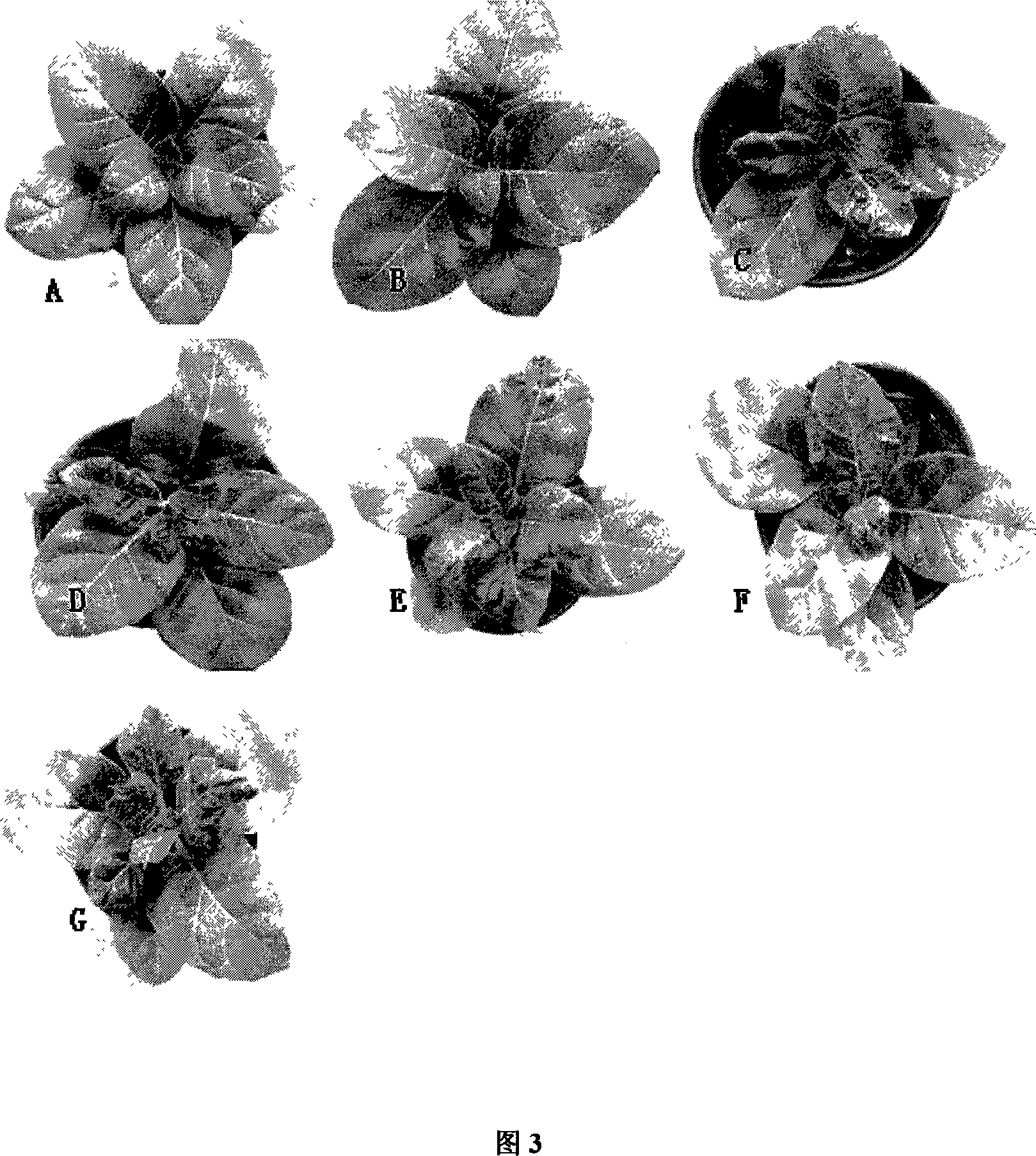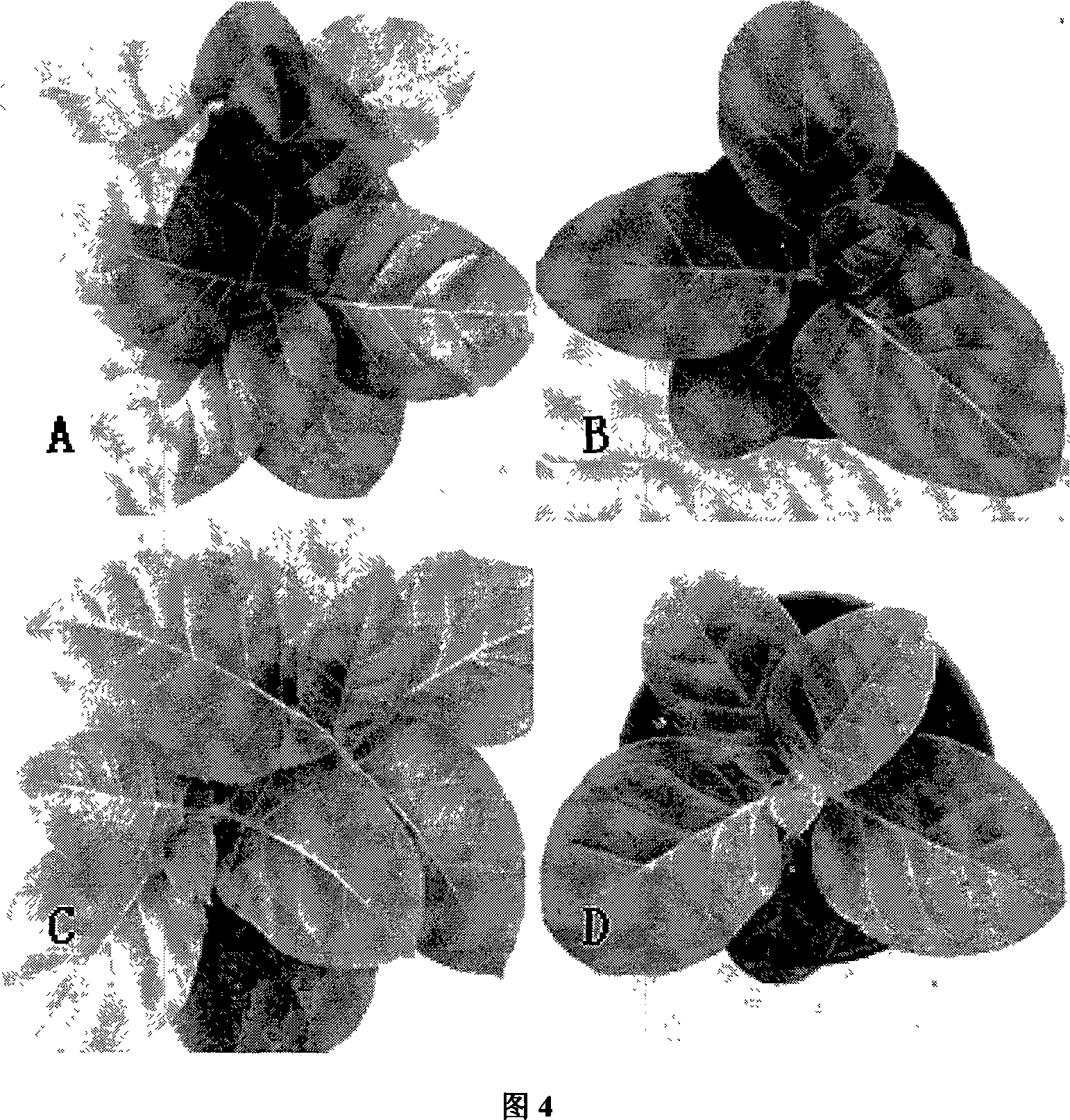Chemical ablation method for recombinant plant virus
A plant virus, chemical inactivation technology, applied in the field of chemical inactivation of recombinant plant viruses, can solve the problem of no related reports on plant virus inactivation
- Summary
- Abstract
- Description
- Claims
- Application Information
AI Technical Summary
Problems solved by technology
Method used
Image
Examples
Embodiment 1
[0064] The exogenous protein S1241 used in this example is a small peptide with a length of 12 amino acids, which is derived from a predicted possible epitope in the S protein of SARS virus, that is, 12 amino acids from positions 1241 to 1252. It is inserted between the 152nd and 153rd amino acids of TMV CP protein, and then a stop codon TAG is added to form a fusion protein with CP to form recombinant tobacco mosaic virus TMVS1241. The inserted amino acid sequence and the nucleotide sequence encoding it are as follows:
[0065] Amino acid sequence: DDSEPVLKGVKL
[0066]Nucleotide sequence: 5'-GACGACTCTGAGCCTGTTCTAAAGGGTGTTAAATTA-3'.
[0067] 1. Preparation of recombinant virus TMVS1241
[0068] 1. Construction of recombinant virus TMVS1241: constructed according to the method described by Li Qiaoli et al. (2006), Virology 348: 253-259)
[0069] 2. Extraction of recombinant virus TMVS1241 particles:
[0070] 2-4 weeks after the recombinant virus TMVS1241 infected tobacco,...
Embodiment 2
[0075] Embodiment two: Recombinant virus TMVS1241 safety detection test:
[0076] 1. Using reverse transcription PCR (RT-PCR) to detect the genome of the recombinant virus TMVS1241.
[0077] Two to three weeks after the inactivated TMVS1241 was inoculated with sensitive tobacco, total RNA was extracted from new leaves. Reverse transcription with primer Pst(-): 5'ACGTCTGCAGACTGGGCCCCTACCGGGGGTAA3'. Using the reverse transcription product as a template, primer Pst(-) and primer Acc2(+):
[0078] 5'TAGAGTAGACGACGCAACGGTGGCCATAA3' was amplified by PCR at an annealing temperature of 55°C for 25 cycles. The product should be a 517bp fragment.
[0079] The results of RT-PCR showed that the recombinant virus genome was not detected in the new leaves of sensitive tobacco inoculated with TMV-S1241 treated with β-propiolactone at concentrations of 1:1000 and 1:500. This shows that the recombinant virus has not infected tobacco and has been successfully inactivated, as shown in Figure...
Embodiment 3
[0082] Embodiment three: Recombinant virus SDS-PAGE and Western blot analysis
[0083] The SDS-PAGE results of the total protein of TMVS1241 are shown in Figure 5. After inactivation of β-propiolactone, no degradation bands appeared in the fusion CP of the recombinant virus, indicating the stability and integrity of the exogenous small peptide expressed by the recombinant TMV virus Unaffected, it is beneficial to the later utilization of exogenous polypeptides.
[0084] Using rabbit serum against exogenous small peptide S1241 as the primary antibody, and alkaline phosphatase-coupled goat anti-rabbit IgG as the secondary antibody, protein immunoblotting (Western blot) was carried out. The results are shown in Fig. 6. The antibody specific to the small peptide of S1241 had hybridization signals with the CP protein of TMVS1241 treated with various concentrations of β-propiolactone. The results of Western blot immunohybridization experiments showed that the exogenous polypeptides...
PUM
 Login to View More
Login to View More Abstract
Description
Claims
Application Information
 Login to View More
Login to View More - R&D
- Intellectual Property
- Life Sciences
- Materials
- Tech Scout
- Unparalleled Data Quality
- Higher Quality Content
- 60% Fewer Hallucinations
Browse by: Latest US Patents, China's latest patents, Technical Efficacy Thesaurus, Application Domain, Technology Topic, Popular Technical Reports.
© 2025 PatSnap. All rights reserved.Legal|Privacy policy|Modern Slavery Act Transparency Statement|Sitemap|About US| Contact US: help@patsnap.com



